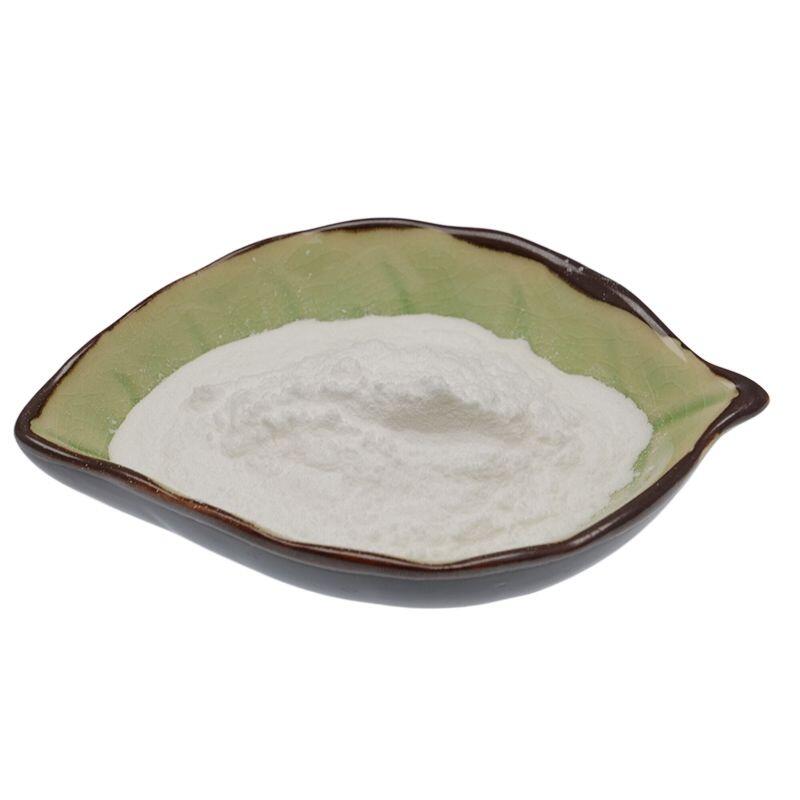-
Categories
-
Pharmaceutical Intermediates
-
Active Pharmaceutical Ingredients
-
Food Additives
- Industrial Coatings
- Agrochemicals
- Dyes and Pigments
- Surfactant
- Flavors and Fragrances
- Chemical Reagents
- Catalyst and Auxiliary
- Natural Products
- Inorganic Chemistry
-
Organic Chemistry
-
Biochemical Engineering
- Analytical Chemistry
-
Cosmetic Ingredient
- Water Treatment Chemical
-
Pharmaceutical Intermediates
Promotion
ECHEMI Mall
Wholesale
Weekly Price
Exhibition
News
-
Trade Service
In this article, the editor compiled the important research results that scientists have made in the field of malaria research and shared them with you!
In this article, the editor compiled the important research results that scientists have made in the field of malaria research and shared them with you!Image source:style="TEXT-JUSTIFY: inter-ideograph; TEXT-ALIGN: justify">[1] bioon.
bioon.
doi: 10.
Professor Donald James, a molecular biologist at UCI, said: “This work solves the big problem of malaria transmission by malaria parasites.
[2] bioon.
bioon.
doi: 10.
Researcher Martin said that in the past 20 years, scientists from all over the world have been doing in-depth research trying to understand the function of the PfCRT protein and why it is essential for the survival of the malaria parasite.
[3] bioon.
bioon.
doi: 10.
Malaria remains a major public health problem, causing nearly 200 million cases and 400,000 deaths in 2018.
[4] bioon.
bioon.
doi: 10.
This stickiness can also cause blood cells to form blood clots.
[5] bioon.
com/article/6750015.
html">Nature: Revealing the mechanism of drug interaction is expected to develop new anti-malaria therapies
com/article/6750015.
html">Nature: Revealing the mechanism of drug interaction is expected to develop new anti-malaria therapies
doi: 10.
1038/s41586-019-1918-4
1038/s41586-019-1918-4
The crystallization process (crystallization) is the core of drug development, petrochemical processing and other industrial activities, but scientists say that they are still studying the complex interactions between the formation and dissolution processes.
Recently, a report published in the international journal Nature In the research report, scientists from the University of Houston and other institutions clarified at the molecular level for the first time what happens when two compounds that inhibit crystal formation combine, such as antimalarial drugs.
Researcher Jeffrey Rimer said that you might think that using two drugs that attack crystals in different ways will produce a synergistic effect, or at least an additional effect, but in fact, the two drugs can resist each other; antagonistic cooperation This means that the combined use of the two drugs is less effective than the single use.
In the article, the researchers hope to design an effective malaria treatment.
When the researchers modify the molecule, they found that a small change in the molecular structure can Greatly change its function.
Image source: CC0 Public Domain
[6] bioon.
com/article/6748662.
html">Nature: Targeting protein SAP2 can restore the sensitivity of mosquitoes to pyrethroid insecticides and help curb the spread of malaria
com/article/6748662.
html">Nature: Targeting protein SAP2 can restore the sensitivity of mosquitoes to pyrethroid insecticides and help curb the spread of malaria
doi: 10.
1038/s41586-019-1864-1
1038/s41586-019-1864-1
In a new study, researchers from the Liverpool School of Tropical Medicine in the United Kingdom have discovered a new mechanism by which mosquitoes carrying malaria parasites are resistant to insecticides.
After studying the two main vectors of malaria in West Africa-Anopheles gambiae and Anopheles coluzzii (another Anopheles)-they found that a specific family of binding proteins located on the legs of mosquitoes Highly expressed in insecticide-resistant mosquito populations.
Related research results were recently published in the journal Nature.
The researchers said that we have discovered a new insecticide resistance mechanism, which we believe is the reason why the net effect is lower than expected.
When mosquitoes stay on the mosquito net, this binding protein located on the mosquito’s legs comes into direct contact with the insecticide, which makes it an excellent potential target for the future development of additives added to the mosquito net to overcome this strong Effective drug resistance mechanism.
"After studying these two Anopheles mosquitoes, these researchers found that the binding protein SAP2 was elevated in insecticide-resistant mosquito populations, and it was used with all mosquito nets, a class of insecticides-pyrethroids ( pyrethroids) --- After exposure, it will increase further.
They found that when the gene encoding this protein is partially silenced to reduce its expression level, the sensitivity of mosquitoes to pyrethroids can be restored.
On the contrary, when this When the protein is expressed at high levels, mosquitoes that were previously sensitive to pyrethroids become resistant to these insecticides.
[7] bioon.
com/article/6782576.
html">PLoS Genet: New mutations in Plasmodium promote resistance to the key preventive drug SP
com/article/6782576.
html">PLoS Genet: New mutations in Plasmodium promote resistance to the key preventive drug SP
doi: 10.
1371/journal.
pgen.
1009268
1371/journal.
pgen.
1009268
There is an ongoing arms race between humans and the parasite that causes malaria (the Plasmodium).
In a new study, Taane Clark from the London School of Hygiene and Tropical Medicine (LSHTM) and colleagues report that new mutations that increase resistance to drugs used to prevent malaria in pregnant women and children are effective in the fight against malaria.
Countries are already very common.
The relevant research results were published in the journal PLoS Genetics on December 31, 2020.
Malaria causes approximately 435,000 deaths each year, mainly young children in sub-Saharan Africa.
Despite the long-term global response, efforts to control the disease have been hampered by the rise of drug-resistant strains of the parasite species that cause malaria.
For example, sulfadoxine-pyrimethamine (SP) was once a first-line antimalarial treatment, but it is now mainly used to prevent infections in pregnant women and children.
Mutations in two genes in Plasmodium falciparum (Plasmodium falciparum) provide resistance to SP, but recently, a mutation related to drug resistance was found in the third gene, pfgch1.
To understand the extent and spread of these new mutations, Clark and his colleagues analyzed the genome sequences of 4134 blood samples collected from 29 malaria-endemic countries.
They found at least 10 different versions of pfgch1, occurring in about a quarter of samples from Southeast Asia and a third of samples from Africa.
In Africa, Plasmodium falciparum strains carrying the pfgch1 mutation may be on the rise.
[8] In- bioon.
com/article/6754786.
html">depth interpretation! Scientists are expected to develop a new malaria vaccine candidate to protect against Plasmodium falciparum infection!
com/article/6754786.
html">In-depth interpretation! Scientists are expected to develop a new malaria vaccine candidate to protect against Plasmodium falciparum infection!
doi: 10.
1038/s41586-020-2220-1
1038/s41586-020-2220-1
Today, malaria caused by Plasmodium falciparum is still the main single factor leading to childhood deaths, but researchers have not developed an effective malaria vaccine.
Recently, an article was published in the international journal Nature entitled "Anti-PfGARP activates programmed" In the research report on cell death of parasites and reduces severe malaria, scientists from Brown University School of Medicine and other institutions are expected to develop a new vaccine strategy against malaria through research.
In this study, the researchers used the previously described screening method to analyze the proteomic characteristics of Plasmodium falciparum during blood infection.
They found that the glutamic-acid-rich protein (PfGARP, glutamic-acid-rich protein) in Plasmodium falciparum ) Or can be recognized by antibodies in the plasma of children who are relatively tolerant to malaria.
PfGARP is a Plasmodium falciparum antigen with a length of 80kDa, which is mainly used in the erythrocytes infected by the parasite at the trophozoic stage in the early to late stages.
The researchers said that antibodies against PfGARP can kill red blood cells infected by trophozoites in the culture medium by inducing programmed cell death of parasites, and using PfGARP to inoculate non-human primates may be able to Partially protect it against infection by Plasmodium falciparum.
[9] bioon.
com/article/6747709.
html">Cell: Gene knock-out research may help identify multiple Plasmodium targets and is expected to develop new anti-malarial therapies
com/article/6747709.
html">Cell: Gene knockout research may help identify multiple Plasmodium targets and is expected to develop new anti-malarial therapies
doi: 10.
1016/j.
cell.
2019.
10.
030
1016/j.
cell.
2019.
10.
030
Despite the tremendous efforts of scientists in medicine and science, there are still more than 400,000 deaths worldwide from malaria.
This infectious disease is transmitted by mosquitoes infected with Plasmodium.
The genome is small, with only about 5,000 genes.
Compared with human cells, Plasmodium has only one copy of each single gene.
If one gene is removed from its genome, the phenotype of Plasmodium will directly occur.
Variety.
Recently, in a research report published in the international journal Cell, scientists from the University of Berne and other institutions have identified a number of new targets of malaria parasites through research.
They conducted a genome-wide knockout study on malaria parasites, especially Removed more than 1,300 single genes, while observing its impact on the entire life cycle of the malaria parasite.
In the article, the researchers used the established Plasmodium model to conduct research.
Each of the more than 1,300 genes mentioned above will be replaced by a separate genetic code to help analyze the effect of removing these single genes on the Plasmodium.
Use these A single code can help researchers analyze more parasites at the same time, which greatly shortens the analysis time.
[10] bioon.
com/article/6743318.
html">Science: A major breakthrough! There is a play to eradicate malaria! Selective inhibition of PfCLK3 protein can kill malaria parasites at various stages of development
com/article/6743318.
html">Science: A major breakthrough! There is a play to eradicate malaria! Selective inhibition of PfCLK3 protein can kill malaria parasites at various stages of development
doi: 10.
1126/science.
aau1682
1126/science.
aau1682
In a new study, researchers from research institutions such as the University of Glasgow in Scotland made a breakthrough.
They revealed that a new drug called TCMDC-135051 may prevent the spread of malaria and may also treat the deadly infection.
People with parasitic diseases.
These findings provide new hope for the global fight against malaria.
The relevant research results are published in the Science journal.
Malaria is an infectious disease spread by mosquitoes.
It currently affects more than 200 million people and causes nearly 500,000 deaths each year, most of which are children.
Malaria is caused by Plasmodium, which infects humans through mosquito bites.
After infection, this plasmodium grows in the red blood cells of the liver and blood.
They can also change in the blood to take on male and female forms.
When mosquitoes bite and draw blood from an infected person, they will reinfect these mosquitoes.
Under the leadership of Professor Tobin, these researchers discovered a method that can kill the plasmodium in all three stages of the malaria parasite's life cycle---the liver stage, the red blood cell stage, and the gametophyte development stage (that is, the sexual development stage).
And drugs to prevent the sexual development of malaria parasites.
()
More exciting inventory! Stay tuned!
More exciting inventory! Stay tuned! More exciting inventory! Stay tuned!






